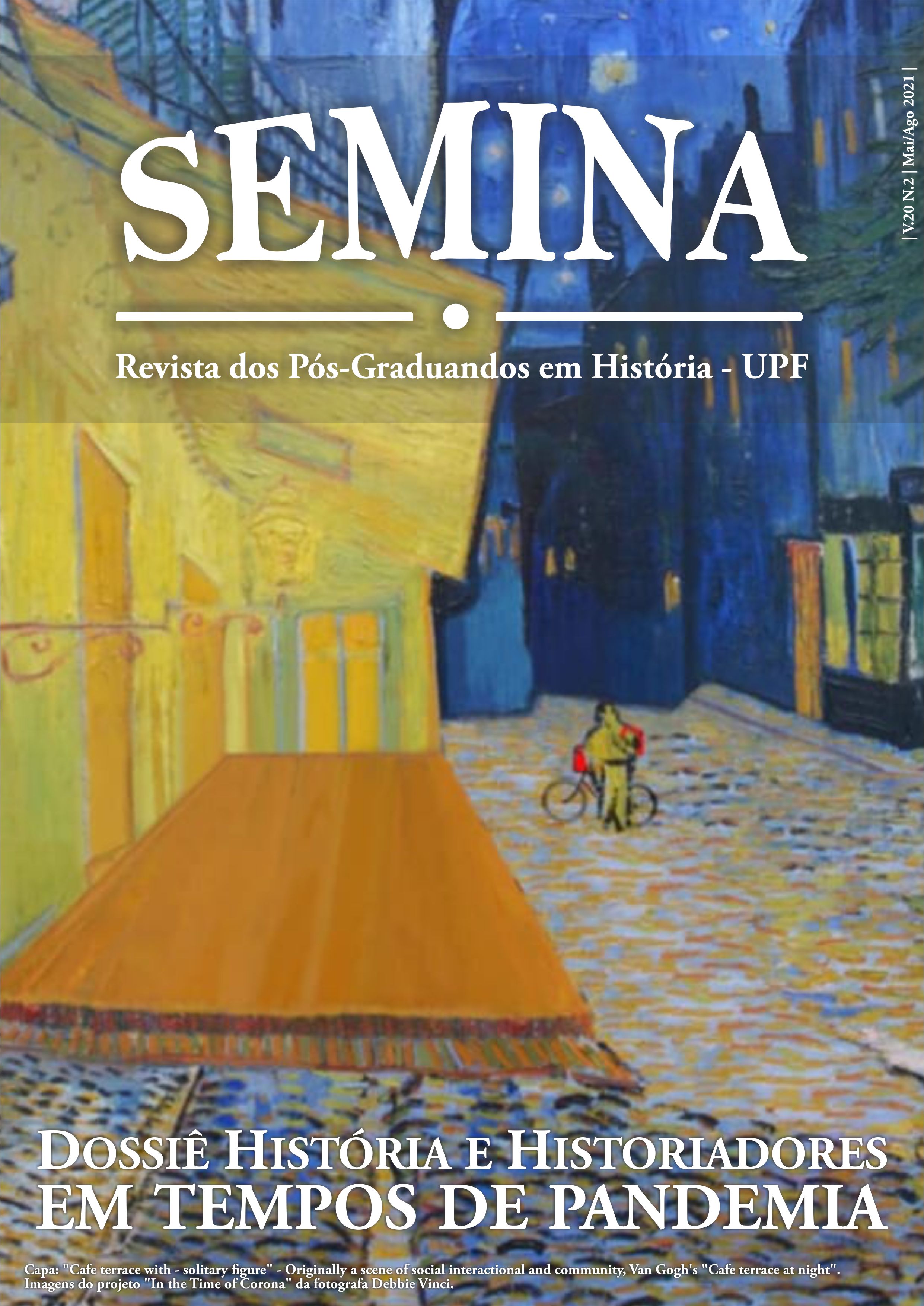The heritage of crossed arms
the collective memory of a scarecrow that became the Napoleon of Praça Tamandaré
DOI:
https://doi.org/10.5335/srph.v20i2.12872Keywords:
Sculpture, Statue, Napoleon, Material Cultural Heritage, Tamandaré SquareAbstract
This article is a brief contribution on the history of the statue of Napoleon Bonaparte that is in Tamandaré Square. The sculptural work is written by the Italian Matteo Tonietti and represents one of the artist's most complex works of art, not only because of its complexity, but also because of the historical trajectory and the current position in the Rio Grande. The research extended to the understanding of the symbolic universe of sculpture, its sculptor and the bourgeois who commissioned the piece. By using the collective memory as a theoretical basis it was possible to understand how the trajectory of a wealthy family discards the possession of a unique work, the fruit of the political period of the time in which families lived and the patriarchs who commissioned them. The results of the analysis of the reports refer to the three moments of the statue and its private and public trajectory.
Downloads
References
ALVES, Francisco das Neves; FUÃO, Juarez José Rodrigues. Estatutária na cidade do Rio Grande nos primórdios da república velha (1889-1990). Coleção Pensar a História, n.31.Rio Grande: FURG, 2005.
ARGAN, Giulio Carlo. História da Arte Italiana: De Michelangelo ao futurismo. v.3. São Paulo: Cosac &Naif, 2003.
BRAGA, Celso Pires. Um apaixonado pela história e pelos mistérios do Senandes. Jornal Agora,Rio Grande, 30 mai. 2014, Caderno Homem, p. 5.
BELLOMO, Harry R. A Estatuária Funerária em Porto Alegre (1900 -1950). 1988. 204f. Dissertação (Mestrado em História) – Pontifícia Universidade Católica do Rio Grande do Sul, Porto Alegre, 1988.
BOITO Camillo. Os Restauradores. São Paulo: Ateliê Editorial, 2003.
CALABRESE, Omar. A linguagem da Arte. Rio de Janeiro: Globo, 1987.
CARDOSO, Ciro Flamarion. Iconografia e História. Resgate: Revista interdisciplinar de cultura. Campinas: Unicamp, v.1, p.9-17,1990.
CASSIER, Ernst. Essência e efeito do conceito de simbólico.México: Fondo de Cultura Económica, 1989.
CHOAY, Françoise. A Alegoria do Patrimônio. São Paulo: Editora UNESP, 2001.
DOBERSTEIN, Arnoldo Warter. Estatuária, Catolicismo e Gauchismo. Porto Alegre: EDIPUCRS, 2002.
GAVAZZONI, Aluísio. Breve história da arte e seus reflexos no Brasil. Rio de Janeiro: Biblioteca Universidade Estácio de Sá, 1998.
HALBWACHS, M. A memória coletiva. São Paulo: Vértice, 1990.
HORTA, Maria de Lourdes P., GRUNBERG, Evelina, MONTEIRO, Adriane Queiroz. Guia Básico de Educação Patrimonial. Brasília: Instituto do Patrimônio Histórico e Artístico Nacional, Museu Imperial. 1999.
MALFATTI, Antonio Roberto. Carta do leitor. Jornal Agora, Rio Grande 25 abr 2013.
LE GOFF, Jacques. História e Memória. Campinas: Editora da UNICAMP, 1996.
MATOS, J. S.; SENNA, A. K. História oral como fonte: problemas e métodos. Historiae: revista de história da Universidade Federal do Rio Grande , v. 2, p. 95-108, 2011.
TORRES, Luiz Henrique. O PoliteamaRiograndende “Napoleão cruza os braços” Jornal Agora. Rio Grande, 3 dez 2011, Caderno O Peixeiro, p. 03.
VEIGA, R. Fradera. Atlas dos Estilos Artísticos. São Paulo: LIAL, s/d.
ZANINI. Walter. A arte no Brasil nas décadas de 1930-1940. O grupo Santa Helena. São Paulo: Nobel; EDUSP, 1991.
Downloads
Published
Issue
Section
License
Autores que publicam nesta revista concordam com os seguintes termos:
- Autores mantêm os direitos autorais e concedem à revista o direito de primeira publicação, com o trabalho simultaneamente licenciado sob a Licença Creative Commons Atribuição 4.0 Internacional – CC-BY que permitindo o compartilhamento do trabalho com reconhecimento da autoria do trabalho e publicação inicial nesta revista.
- Autores têm autorização para assumir contratos adicionais separadamente, para distribuição não-exclusiva da versão do trabalho publicada nesta revista (ex.: publicar em repositório institucional ou como capítulo de livro), com reconhecimento de autoria e publicação inicial nesta revista.
- Autores têm permissão e são estimulados a publicar e distribuir seu trabalho online (ex.: em repositórios institucionais ou na sua página pessoal), a qualquer ponto antes ou durante o processo editorial, já que isso pode gerar alterações produtivas, bem como aumentar o impacto e a citação do trabalho publicado, de acordo ainda com a democratização científica prevista pela Ciência Aberta.





